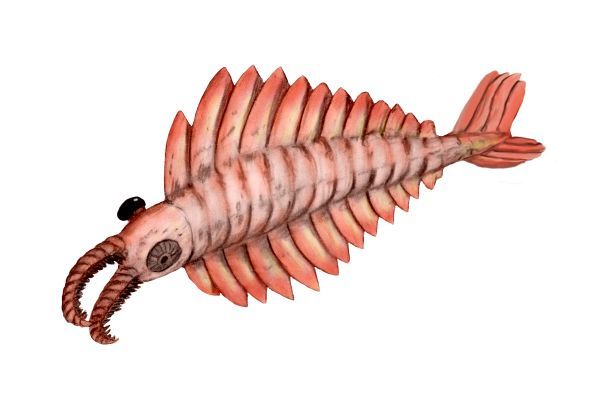Puzzle(ing) Animals. What do a shrimp, a jellyfish and a sponge have in common? It took palaeontolog
Puzzle(ing) Animals.What do a shrimp, a jellyfish and a sponge have in common? It took palaeontologists around 80 years to work this one out.The Burgess Shale, in the Canadian Rockies, is one of the best places in the world to find fossils. It was formed when a massive underwater landslide engulfed an entire Cambrian (541-485 million years ago) reef, preserving everything that lived there in spectacular detail. This is why we keep going on about it (http://on.fb.me/Riw7KU).While exploring the Burgess shales, and nearby areas, scientists have discovered thousands of long extinct animals. Today, we’re going to take a look at three, which provided quite the puzzle.The Shrimp.In 1892 the British palaeontologist Joseph Frederick Whiteaves discovered a crustacean-like creature around 8.5 cm long in the nearby Ogygopsis Shale, which looked like a strange shrimp. He gave it the latin name Anomalocaris, which translates to ‘strange shrimp’.The Jellyfish.In the Early 20th Century Charles Doolittle Walcott discovered a strange jellyfish in the Burgess shale, which looked a lot like a fossilised 5 cm diameter pineapple slice. He called it 'Peytoia’.The Sponge.Walcott also discovered a strange 'sea cucumber’, which he called Laggania, although in 1978 Simon Conway Morris weighed in, and worked out that this sea cucumber was in fact a jellyfish (Peytoia) squashed on top of a sponge.For decades, these animals existed in the scientific world. People discussed them, drew them, and wondered about their role in the Cambrian ecosystem. Then in the early '80s Harry Whittington noticed something peculiar. These three, separate animals fit together. They combined to make a beast so alien-looking that previous palaeontologists had thought they were several different species, rather than a single animal. The 'sponge’ was its torso, the 'jellyfish’ its mouth, and the 'shrimp’ was one of its two, large feeding arms. Together, these parts combined to make an animal up to 1 metre long - the largest animal in these ancient oceans. This creature is known as Anomalocaris, keeping the 'strange shrimp’ name given to it’s feeding arm, although this beast is far from a shrimp.Scientists have since discovered several whole specimens of Anomalocaris, and worked out a lot about how it lived. Its size means that it would have been a top predator in the Cambrian. It had complex compound eyes, which would give it excellent vision, similar to a dragonfly today. It probably fed on hard-shelled 'trilobites’, which were common throughout the ocean.OBImage Credit: http://goo.gl/5rZtCAA video about Anomalocaris: http://goo.gl/F7kMO1Some other Burgess Shale Wonders:The REAL prequel to Jaws: http://goo.gl/gVGUbTOpabinia: http://goo.gl/W7rhNL -- source link
#anomalocaris#animal#fossil#geology#fossils#fossilfriday
